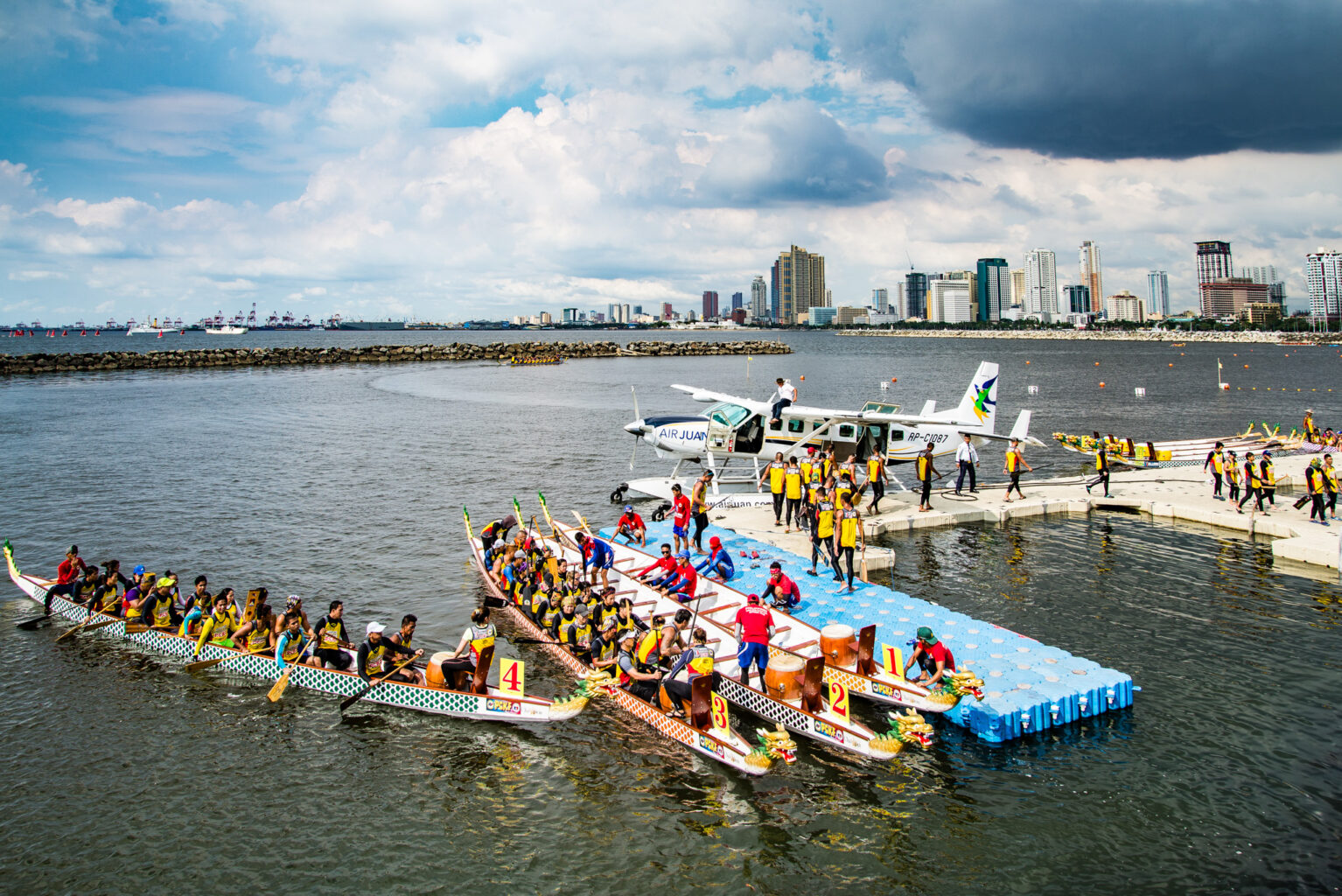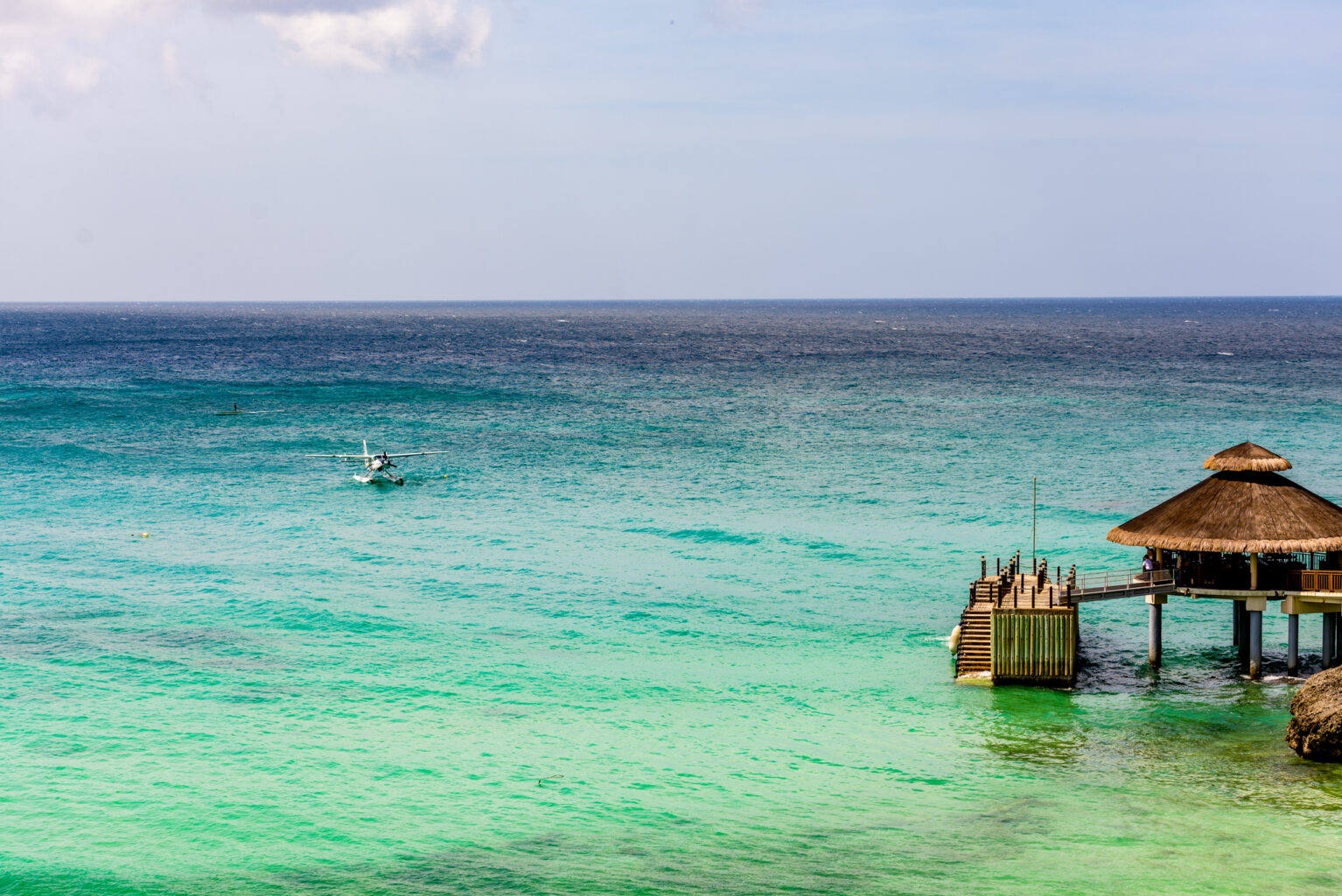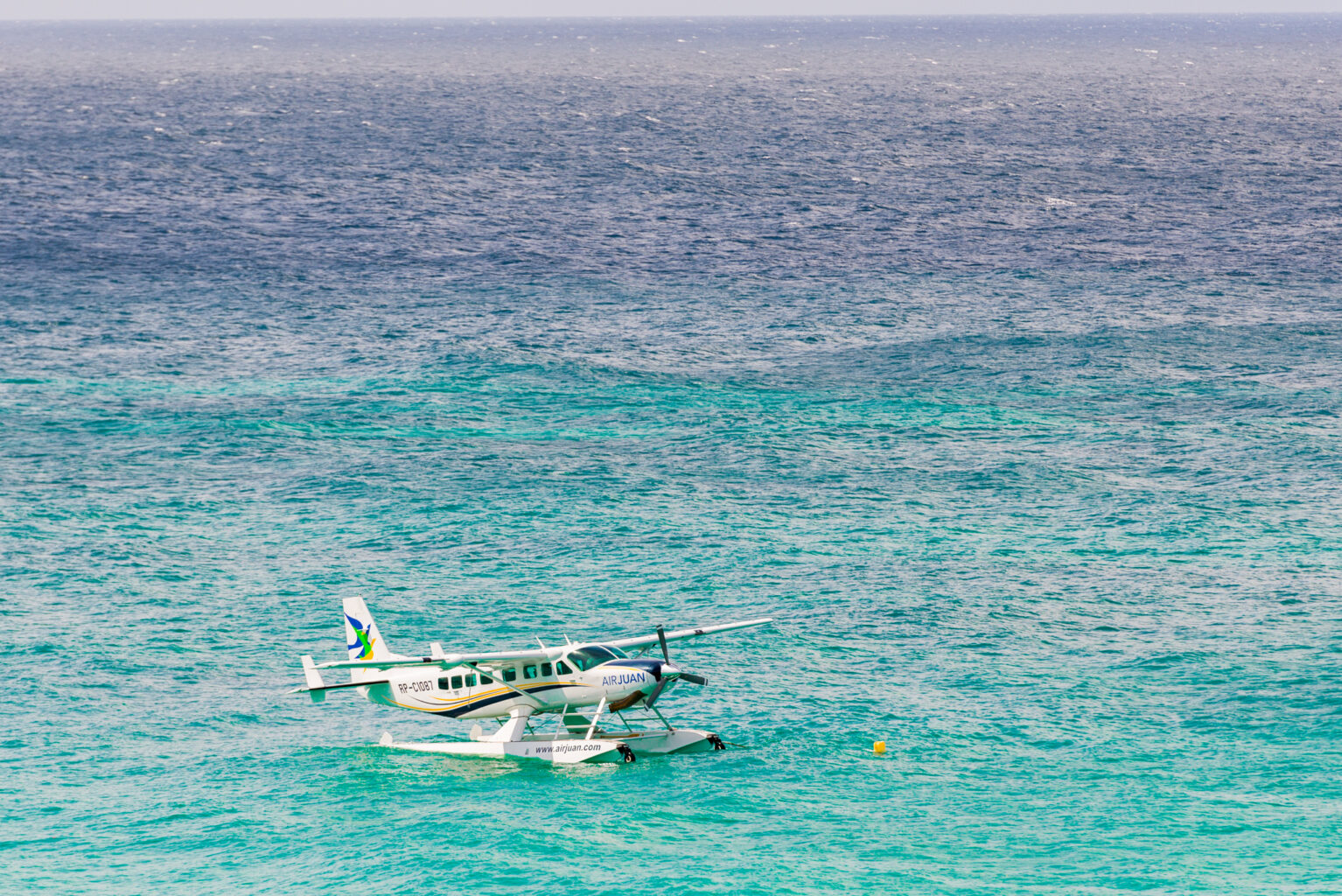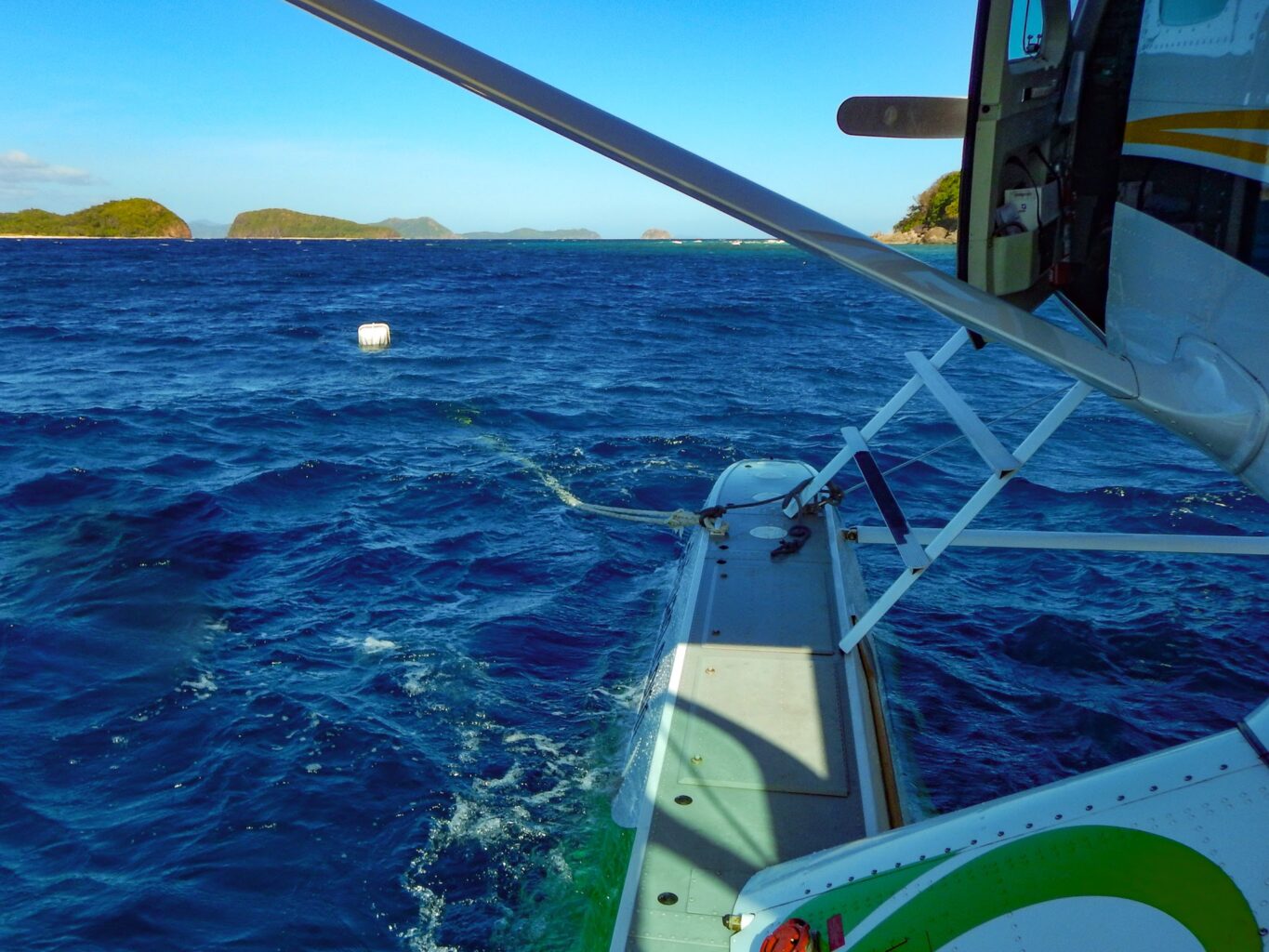Part Three of: What is the Difference Between a Floatplane and a Seaplane?

You cannot find the definition of sea readiness in a dictionary. The Navy has an equivalent process called Ship Readiness, which involves assessing whether ships and crew are ready to operate in the waters of the world’s oceans. I do the same when starting seaplane flights into new ocean territories. Safety management calls this “risk assessment.” The title of such a risk assessment would read: “Risk assessment of putting inexperienced pilots into not-made-for-purpose floatplanes to fly into open water environments.” What could go wrong?
Fiji, Indonesia, Thailand, Greece, Croatia, and the Philippines have many more open-water areas than protected areas. Because of potential exposure to the open ocean, not all locations can be operational 365 days a year. The shifting monsoons, king tides, strong winds, long fetches, gaps in the protective reefs, and distances between islands allow big swells to power up and power in.
Nonetheless, there are numerous arms, bights, bays, coves, and inlets where a pilot can find protected waters on different days and seasons. With local knowledge and experience, a seaplane pilot can predict when and where to find a safe harbour. All these countries have protected waters, but each sea state has to be assessed and tested for differing conditions for every season or monsoon.
The Maldives is a special case-in-study because the atolls and lagoons provide the means to operate conditionally 365, even though it is an open ocean environment. More about the Maldives later.

Additional Definitions
Impact Speed: You have heard that water can be as hard as concrete if you hit it fast enough. That is partially true. Water, like concrete, is incompressible. Unlike concrete, however, water is fluid. The problem is that water cannot move out of the way fast enough if hit by a heavy object going too damn fast. Like your drunken pilot friend who insists on showing off with a belly flop or slapping the surface of still water with an open palm, it would be concretely disastrous for a seaplane to collide with an incoming swell at high speed.
That is why the best open-water floats have a deep V design. As the V cuts through the water’s surface, it displaces water efficiently, enabling the aircraft to slow down enough to settle in and avoid the impact. The slower the landing speed, the less the impact. The more efficient the V in displacing water, the less the impact. (If you have deliberately slapped water with an open hand, you have likely stuck your tongue on a chain-link fence in the winter. Pilot job interviews should include those questions.)
Big Water: Picture a seaplane landing on a rough day in open water with enormous waves and tumbling white caps. The pilot must cut the crest of the first large wave (the first point of contact) with the V of their floats (or hull, but more about that later) to slow the seaplane down quickly enough to settle into the next oncoming wave without ripping off the floats or bouncing wildly back into the air and coming down with a tailbone-crushing thud. We call that a Big Water landing.
Green Water: Imagine a seaplane taking off in large swells, where the oncoming crests are higher than the view from the pilot’s seat. The spray created from plowing through the swells (while trying to gain momentum) splashes large sheets of water on the windshield, making the water appear green. It’s like throwing a washtub of water on your windshield. We call that a Green Water take-off.

I’ve seen Twin Otters submerge into swells and disappear in a cloud of spray during take-off runs. I’ve seen Caravan floats get fully submerged—we call that submarining—under an oncoming swell during the start of a take-off run, only to bob up again just in time to push through the next swell.
Dipswitch: (The engineers think, “Oh, an electrical part! I should pay attention.”) I witnessed a pilot land a floatplane downwind in two-meter-high swells. During the touchdown, the plane bounced wildly off the first swell, stalled, and nose-dived through the third swell, disappearing in the blue water and ensuing green spray. The floatplane submerged out of sight for a few seconds, only to bob up again at a complete standstill with the engine still running.
It was a testimony to the floatability of the floatplane, but not necessarily a testimony to the superior judgment of the pilot. I had just landed in the same area but behind a protective breakwater only a few minutes away, where the water was flat and calm. We called this pilot a dipswitch, or DF for short. (I believe Engineers came up with the term dipswitch to describe pilots who break their airplanes.)

Sea Readiness: An expert pilot learns when to abort landings, takeoffs or departures if the risk criteria are too high, whereas the company management needs to back the pilot’s decision. However, the seaplane’s capacity to withstand open ocean operations and the pilot’s training and expertise in evaluating and managing big water landings or green water takeoffs determine if a floatplane or flying boat is a suitable seaplane, and if a pilot is a capable seaplane pilot.
Only by experiencing the impact of wind, waves and swells on the seaplane will a pilot learn when to abort or when to go for it. A sturdy boat hull or set of floats will take a lot more punishment than a newbie pilot. The trick is to learn the limits without exceeding them. Pushing your personal limits differs from pushing the aircraft’s limits. In the former, you may have to abort a landing or wait for calmer seas, but in the latter, you may perish.
Once floatplane pilots gain the experience to make sound judgements, the skill to fly in the open sea, and the knowledge of the aircraft’s limits, they graduate or transcend to the status of a seaplane pilot. I call this pilot sea-ready, dipswitches notwithstanding.

Sea readiness and successful commercial operation also depend on the management (and, by proxy, the pilots) using superior judgment in deciding when and where it will be safe to land and take off at the specific time they plan to be there. In other words, the management uses operational control to pre-determine safe seaplane zones and dispatch the flights, and the pilots use standard operating procedures to guide decisions. The authorities would pre-vet and most likely deem a safe port in a storm as an approved waterdrome.
The ability to fly commercially, however, depends on dispatch reliability. A company seaplane should be able to land at an approved waterdrome 365 or at least often enough to be financially viable. A floatplane can land anywhere there is sufficient water, but only if the surface conditions are suitable, i.e., ranging from flat to mildly rough.
C180, C206, Beaver, and Caravan floatplanes have operated successfully in open-water environments, but an ideal commercial seaplane routinely handles strong winds and rough water and can extend the operational dispatch rate to 365 regardless of the sea conditions within the approved waterdrome. Twin Otters on Wipline Floats have become the seaplane of choice because they have excellent dispatch reliability, but purpose-built flying boats can do better.

So, if someone asks you the difference between a floatplane and a seaplane, you can say, “All floatplanes can be seaplanes, but not all seaplanes are floatplanes.” Or you can say, “Seaplanes land and take off on the sea.”
If someone asks you the difference between a floatplane pilot and a seaplane pilot, you can say, “All floatplane pilots can land on water, but not all floatplane pilots can land on the sea.” Or you can say, “Seaplane pilots land and take off on the sea.”
Remember these two powerful quotes if you are getting discouraged at the likeliness of ever finding your port in a storm.
It’s always darkest before dawn.
It’s always calm before the storm.
Since these two cancel each other out, my port in the storm is to stay in the storm’s eye. If someone is “in the eye of the storm,” they are “deeply involved in a difficult or controversial situation which affects or interests a lot of people.”
I hope you haven’t forgotten about the duck. Up next: Flying Boats, Amphibians, and Seaworthiness.
Part Four: Flying Boats, Amphibians, and Seaworthiness.

